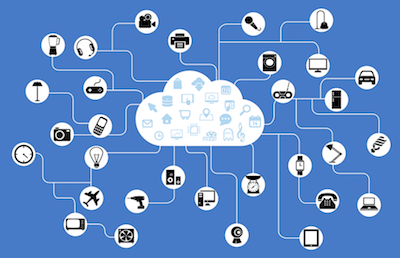
The Internet of Things, or IoT, covers a lot of territory — from big industry to wearable tech. Generally speaking, it is a “network of physical objects—devices, vehicles, buildings and other items embedded with electronics, software, sensors, and network connectivity—that enables these objects to collect and exchange data”, as defined by Wikipedia.
In the networking world IoT gets narrowed down somewhat and with it a set of terms and acronyms of which most of us are unfamiliar. In this blog entry we take a look at some of the more commonly used terms we use without always knowing their definition.
Here is our top twelve:
- IPv4 and IPv6
- IP is Internet protocol, an internet addressing scheme, often referred to as the ‘IP Address’. IPv4 defines internet addresses in a 32 bit format providing roughly 4.3 billion addresses, which turns out not to be enough combinations to provide enough unique internet addresses for users and devices. IP Version 6 was constructed because of the limitations of Version 4. The biggest difference is V6 defines internet addresses in a 128 bit format and can therefore provide around 340 undecillion addresses! It’s been said IPv6 can assign an address to every atom on the surface of the earth, and still have enough addresses left to do another 100+ earths. (Steve Leibson, Computer History Museum)
- NAT
- Network address translation (NAT) is a methodology of remapping one IP address space into another by modifying network address information in Internet Protocol (IP) datagram packet headers while they are in transit across a traffic routing device.
- PAT
- Port Address Translation (PAT), is an extension to network address translation (NAT) that permits multiple devices on a local area network (LAN) to be mapped to a single public IP address. The goal of PAT is to conserve IP addresses and it uses ports to differentiate the devices on the network. This approach does create significant issues for device to device communications as it adds a layer of obfuscation.
- Interoperability
- The ability of systems or products to work with or use all or parts of other systems and products without the need of much or any human intervention through direct M2M and API accessibility.
- M2M
- Machine to machine (M2M) is a broad label that can be used to describe any technology that enables networked devices to exchange information and perform actions without the manual assistance of humans.
- Location Technologies
- Any technology that is able to detect its current location and then manipulate this data to control events and information. (Techopedia) Think of it as the next generation GPS. By itself, GPS gets coordinates, but doesn’t do anything – that where the application can provide value. For example, GPS can sense when the car has arrived at the destination, i.e. pulled into driveway, and will then turn on the lights in the driveway.
- Digital Entity
- Any computational or data element of an IT-based system. (iot-a.edu) A highly abstract representation of a concept. (archivists.org)
- Environmental monitoring
- The systematic sampling of air, water, soil, and biota in order to observe and study, as well as, derive knowledge. The processes and activities that need to take place to characterise and monitor the quality of an environment. Datacenters have needed to monitor their internal environments for decades, now IoT is making this concept available on a consumer level.
- Infrastructure Management
- The management of essential operation components, such as policies, processes, equipment, data, human resources, and external contacts, for overall effectiveness [of an enterprise IT environment]. (searchcio.techtarget.com)
- Big Data
- A term for data sets that are so large or complex that traditional data processing applications are inadequate. The term “big data” also describes any voluminous amount of structured, semi-structured and unstructured data that has the potential to be mined for information. [to reveal patterns, trends, and associations, especially relating to human behavior and interactions].
- Uniform Resource Identifier (URI)
- A method to identify any point of content, whether it be a page of text, a video or sound clip, a still or animated image, or a program. The most common form of URI is the Web page address, which is a particular form or subset of URI called a Uniform Resource Locator (URL). (searchsoa.techtarget.com)
Knowing the definition, history, or relationship of terms forges a better understanding of how these processes interact. Since the Internet and its Things is ever growing, the list of terms will follow suit. Next time we’ll take a look at additional terms related to network-enabled devices.
Questions? Concerns? You can contact us at 6connect to speak directly with an engineer. If you are looking to automate and scale your provisioning, we’ve got your back.
Email: info@6connect.com or call +1 (650) 646-2206.







